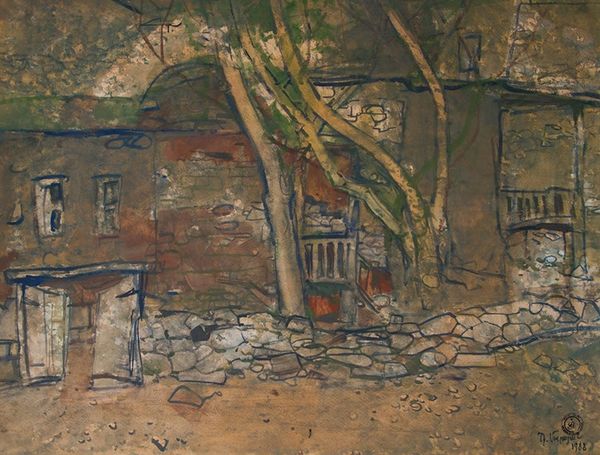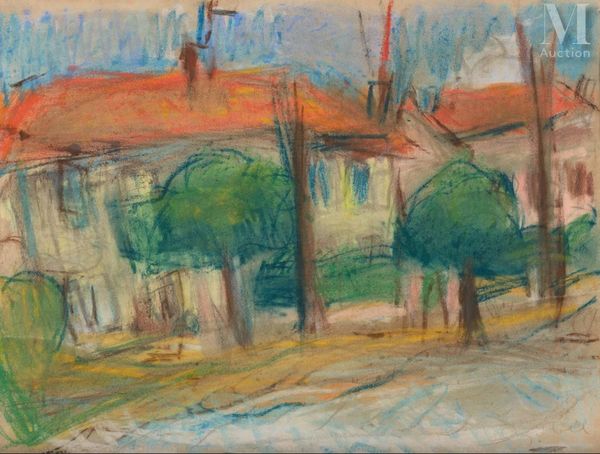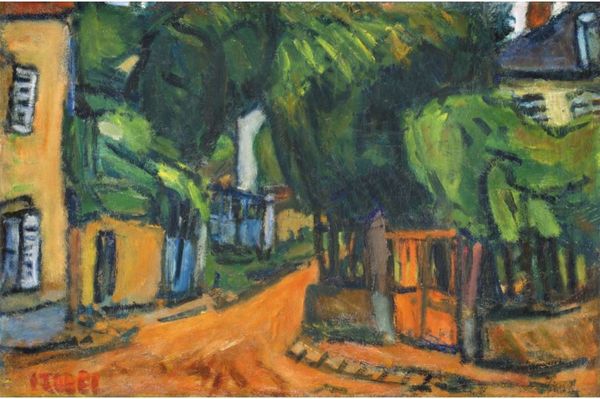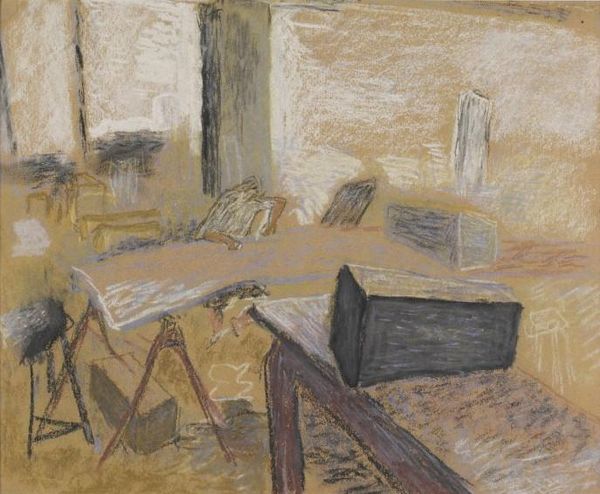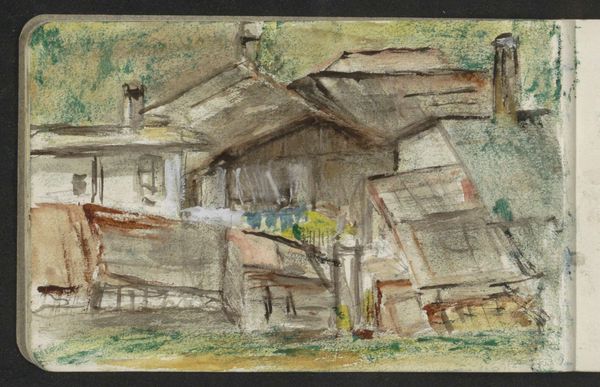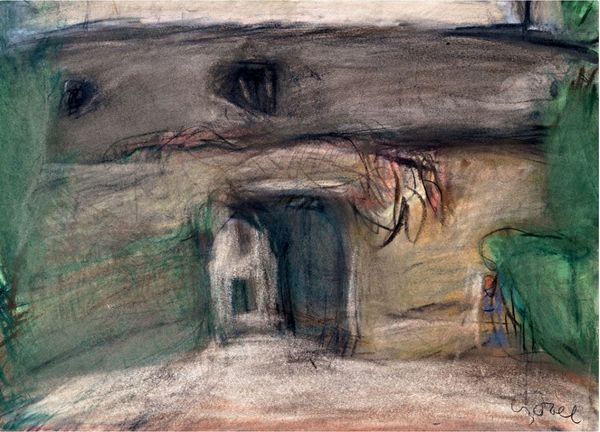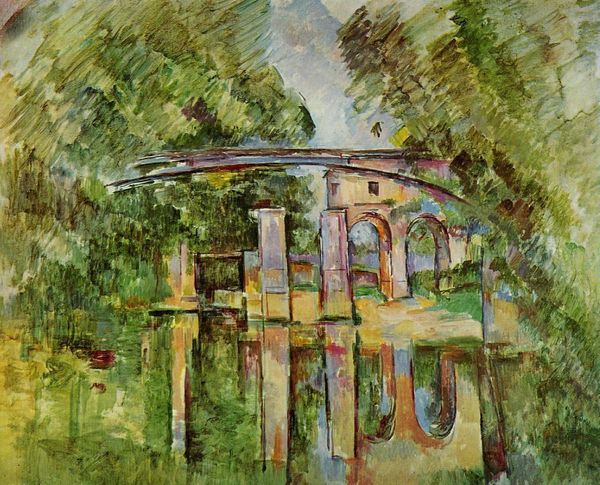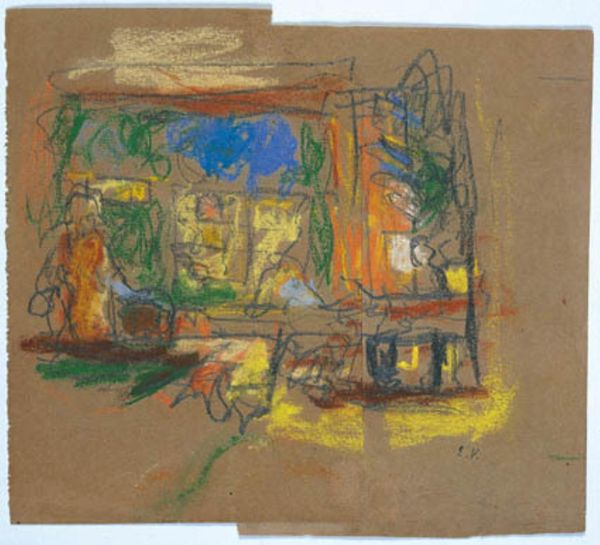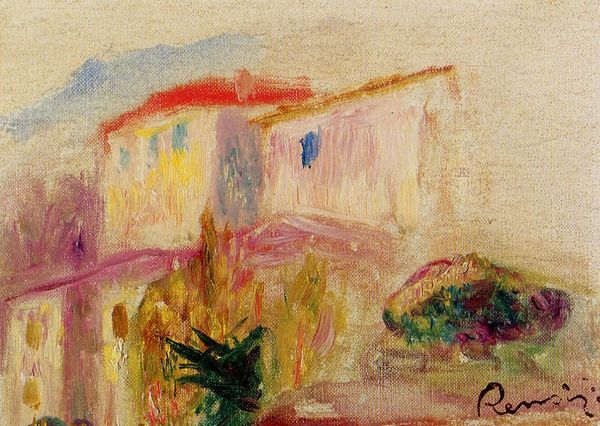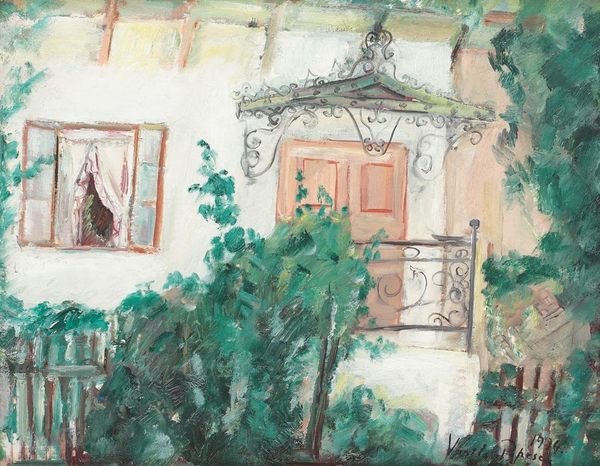
Copyright: Public domain
Curator: I’m drawn to the immediate sense of quietude in Vasile Popescu’s 1933 painting, "Houses in Balchik." It is rendered in oil on canvas. There’s almost no human presence, just these buildings nestled into what I imagine is the Bulgarian countryside. What do you make of it at first glance? Editor: The earthy tones really dominate, creating this kind of rustic visual field. It gives the impression of being unfinished, almost a study, which amplifies the intimacy. Looking at the symbols, I wonder about the closed windows in the yellow building. Are they warding something off? Is that the psychological drama here? Curator: Balchik, you know, was under Romanian administration in the early 1930s, and a haven for artists seeking refuge and inspiration. But it makes me think, was this "idyll" accessible to everyone? Did this rustic simplicity extend to the everyday lives of people living there, or was this constructed, imagined? Editor: Interesting, so there’s potentially a cultural tension there. As for symbols, beyond the windows, the overall arrangement has a somewhat flattened perspective, the buildings stacked almost, compressing the space. This resonates with traditional depictions of towns as microcosms, enclosed spaces for community and safety, set apart. Is the artist showing it was both welcoming and separate? Curator: Perhaps. It's not clear what his particular cultural lens was, but I do like your reading of compression as both protection and maybe confinement. However, regarding social tension, remember Popescu himself belonged to a generation seeking to construct an independent Romanian modernism... a complicated cultural landscape. The expressionist brushstrokes seem almost to vibrate with suppressed feeling. Do you feel this adds another layer? Editor: I think that expressionism certainly emphasizes the felt experience. The colors feel so raw; it looks like ochre pigments that go way back through art history. It really underscores Balchik as this repository of tradition, maybe longing for it. Looking at this work has given me some real insights today. Thank you. Curator: And to me as well. It reveals an interesting dialogue, reflecting both cultural identity and the politics of place. I'll certainly look at his later works with this perspective.
Comments
No comments
Be the first to comment and join the conversation on the ultimate creative platform.
